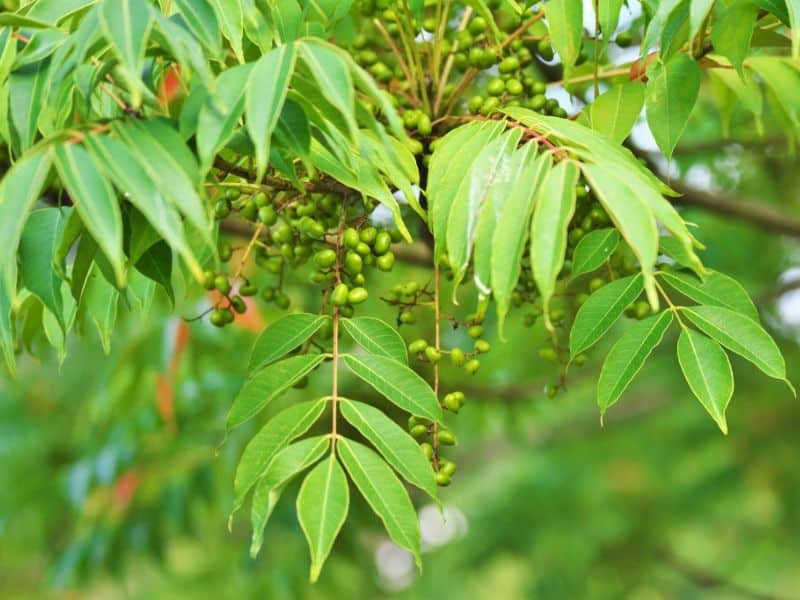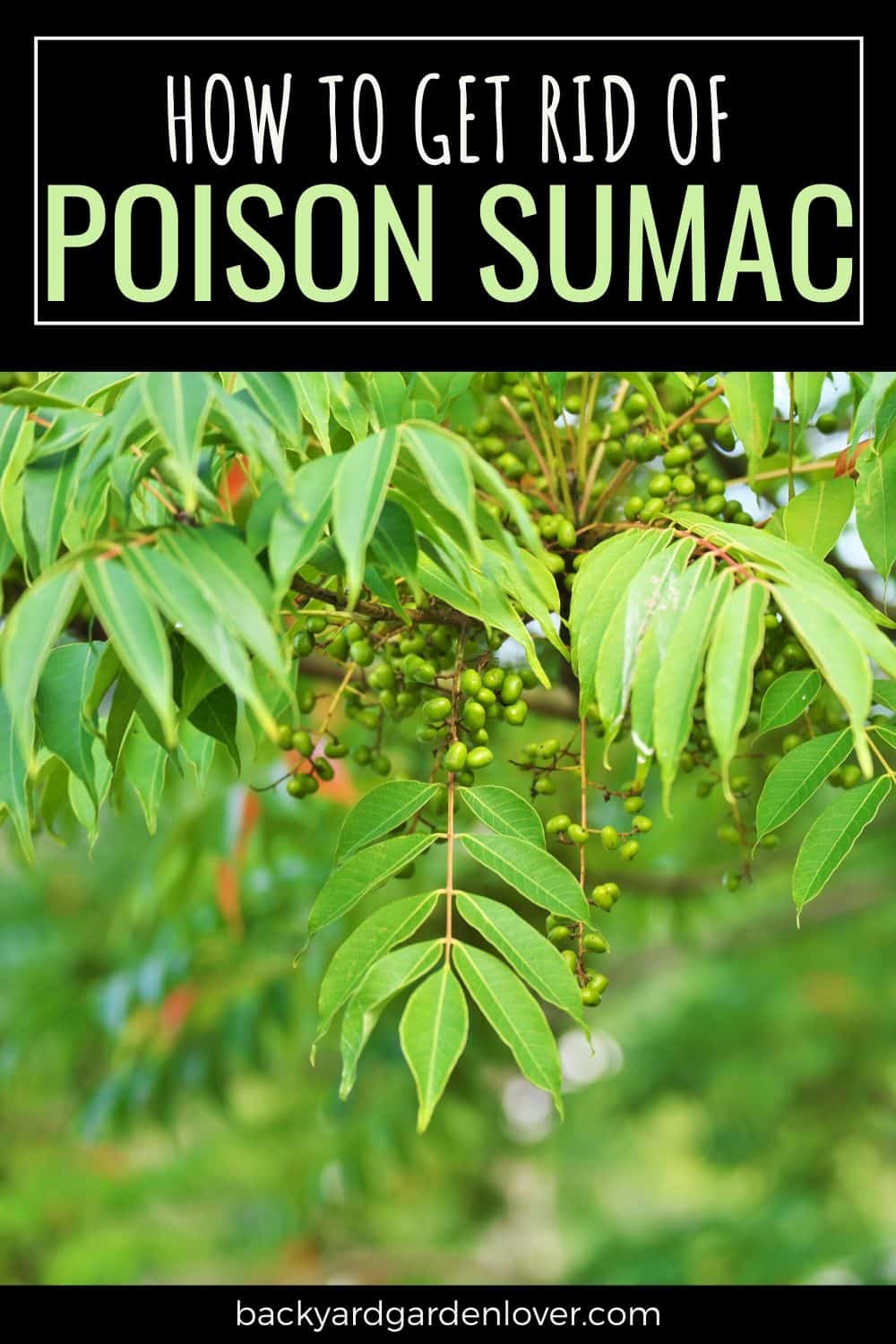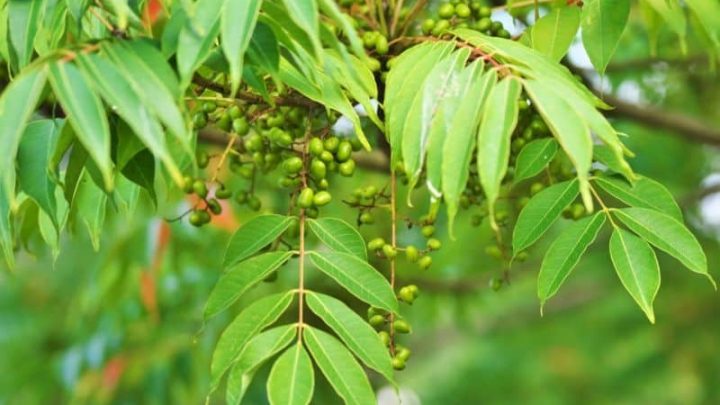Even thinking about coming in contact with this plant can get those feelings of itching start to creep in. If you’ve ever come in contact with this nasty bush, then you know the importance of being aware of its existence and effect on you and your body. Learn how to get rid of poison sumac, so you can relax while out in your backyard.

Exploring in the woods and the outdoors is a ton of fun, but if you happen to find yourself in contact with poison sumac, it’s important to know what you should do to get rid of it as well!
Even more important is knowing how to get rid of the poison sumac plants that can be hanging around your yard and home. If you think you have these plants in your backyard, it’s important to take the steps to get rid of them before they spread.
What Is Poison Sumac?
Poison sumac can have a variety of forms. It can be a bush or a tree, and is usually not any taller than 6 feet or so in height. The stems and leaves are a bit glossy while the back or bottom side of the leaf has a greenish color to it. The leaves are arranged in pairs.
Another tell-tale sign is the red stems and the small groups of yellow-green, or light pink flowers. Poison sumac bushes tend to grow and thrive in very wet climates. If you happen to live in a swampy area, it’s important to know what you are looking for.
In the fall, these plants turn beautiful colors. But they’re not worth keeping it around your property.
Here’s how to identify it, and the differences between the staghorn and poison sumac.
How To Get Rid Of Poison Sumac
It is possible to rid your home or yard of poison sumac with several different methods. There are chemicals out there that can help to rid your yard of the plant, but you can also use a more natural method.
Got other unwanted plants in your yard? Here’s how to get rid of unwelcome plants in your garden.
Pull out the sumac and its roots
Digging out the poison sumac plant is a possibility, but you need to make certain that you are getting out the entire plant and root system when attempting. If not, it will grow again and you’ll never be fully rid of it.
If you’re going to attempt this method, make sure you’re properly dressed. You’ll need long pants, long sleeves, and gloves (if you use short sleeves, you can use a pair of long gardening gloves).
After pulling out the poison sumac plants, discard them in a plastic bag. Tie it up well, so you (or a family member) don’t accidentally open it up ad get infected.
Never burn poison sumac plants, as the poisonous oil will spread through the smoke and affect your lungs.
Cut it down
Another natural method to get rid of poison sumac plants is to cut the plant down to the stem over and over again. You have to do it repeatedly as the plant will continue to grow, every week or two.
If you keep up with it and cut it quite often, it will eventually end up dying off and won’t re-sprout or grow again. This method is more time-consuming, taking up to 2 years, but there are fewer chances to get its leaves and the urushiol oil all over yourself.
Don’t mow or use a weed wacker: you’ll spread oily particles all over your yard and your clothes. Cut it with a pair of sharp garden clippers and make sure to wear gloves.
What to do if you come in contact with poison sumac
No Rein’s Jewelweed Salve 4 oz the Jewelweed Plant Is Commonly Used for Poison Ivy Oak and Sumac If you happen to come in contact with the poison sumac plant, you might get an allergic reaction. It’s important to know that there are things that you can do to help control the spreading and the itch.
If you happen to come in contact with the poison sumac plant, you might get an allergic reaction. It’s important to know that there are things that you can do to help control the spreading and the itch.
Wash your body with cold water
Just because your body doesn’t start showing signs of a rash immediately, don’t wait! Wash your body with cold soapy water to try to remove any of the oils that may be lingering.
Warm water can have a reverse effect and actually cause it to spread because it opens up your skin pores. Cold water and soap is the key to naturally removing the oil from the poison sumac plant.
Don’t forget to scrub under your nails and clean your clothes
Getting a good scrub to your nails and under them is important to make certain that there aren’t any of the poisonous oils hiding underneath!
As soon as possible, remove the clothes that you were wearing as well to give them a good cleaning, too. When it comes to the possibility of spreading poison sumac, you don’t want to take any chances.
How to soothe a poison sumac rash
If you missed a spot and got a poison sumac rash, you can use a few natural ways to get relief:
- use a poison sumac (works for poison ivy and oak too) wash, like this Zanfel dual-action formula
- spray a 50/50 solution of vinegar on your rash. Alert: it will burn!!!! But after the initial burn, your itching will go away and your rash will dry out. Apply 2 or 3 times a day.
- apply this soothing healing gel
Now you know how to get rid of poison sumac.
Don’t take it lightly if you come in contact with this bush. Statistics show that it’s less common than the other poisonous plants, but it’s one of the more toxic ones as well.
The plant can be difficult to get rid of, but with the methods above it is possible. Remember that persistence is key to getting rid of the poison sumac plant and also the rash that appears as well.
Do you have poison ivy on your property? Here are some suggestions for removing it safely.
And if you struggle with poison oak, here are 3 ways to get rid of it naturally.





Katherine Guerrette
Thursday 3rd of March 2022
can vinegar poured into the root and stump I have cut kill poison sumac? I live on a pond and I don't want chemicals to seep into the water as the sumac tree is on the bank
Adriana
Thursday 3rd of March 2022
If it's a young plant, yes. Otherwise, not so sure, but you can give it a try.
Sharon
Wednesday 2nd of March 2022
We have a hundred year old maple tree that has been consumed with sumac. The tree is lost, however we cannot get anyone to cut it down due to the sumac growing all over it. Any thoughts on how to kill it? The sumac tree is imbedded in the maple tree and we cannot cut it down.
Adriana
Thursday 3rd of March 2022
Even if you managed to kill the sumac, you'd still need to protest yourself (or whoever is cutting down the tree). You probably need to ask a professional tree removal company.
Best Landscaping Ideas For Your Home
Sunday 29th of August 2021
[…] How To Get Rid Of Poison Sumac For Good […]
Kristin Mikkelson
Thursday 26th of August 2021
I will be taken down a total of 5 small trees [sumac] I'm wondering if the trunk is dangerous as well as the leaves?
LOUIS CRISCIO
Sunday 26th of September 2021
@Adriana, what about the dead leaves from poison sumacs, can they effect you also?
Adriana
Friday 27th of August 2021
Yes, all parts of poison sumac are poisonous
Christy
Friday 12th of October 2018
Warm water does NOT open your pores! It doesn’t matter what the water temp is as long as you use plenty of soap to wash the plant oils off your skin. The only advantage to cold water is that the coolness eases some of the itching.